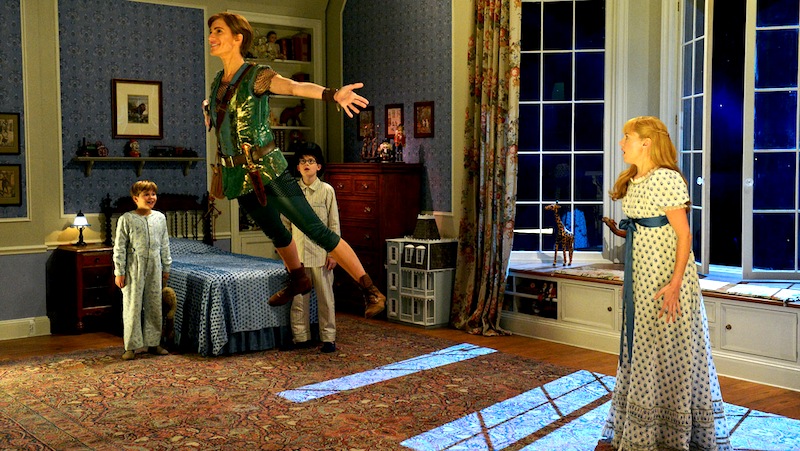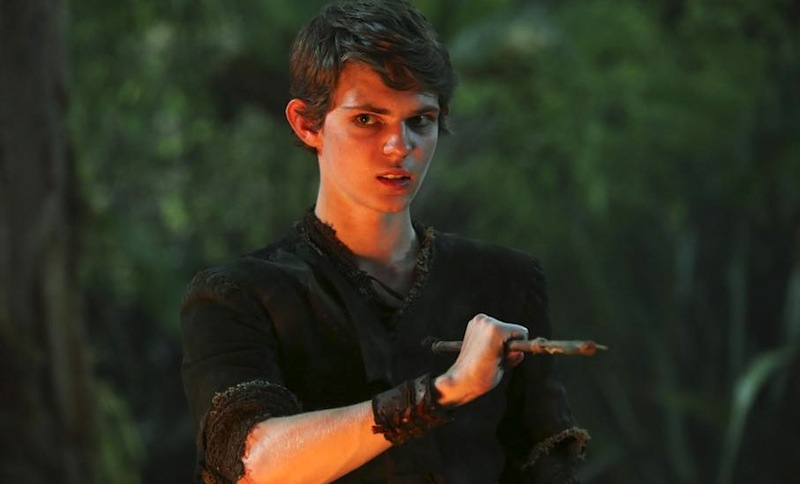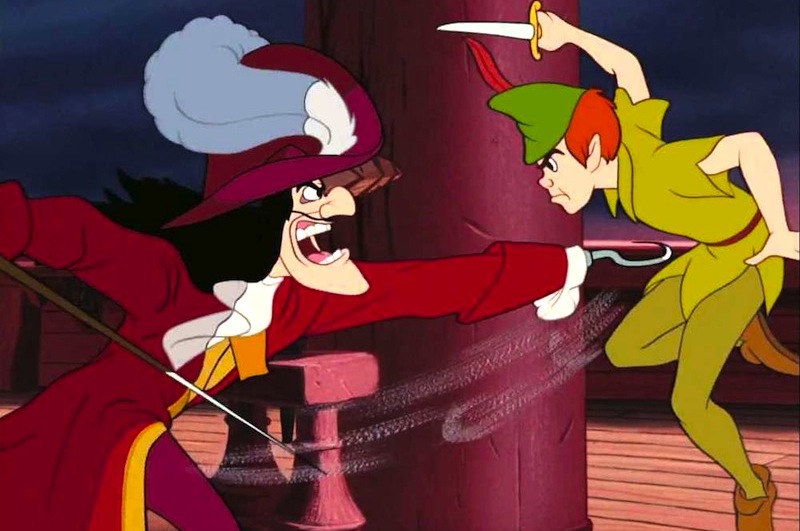Peter Pan is one of the greatest children’s stories in western literature, as its constant revival proves. But what makes the Pan so inspiring, so worthy of our adoration? Why do we cling to this tale with every childlike corner of our hearts, and dread its bittersweet end? Why does the tale of Peter and Wendy attract child and adult alike, long past the point of growing up?
This may come as a surprise to you, but it’s probably because the Boy Who Won’t Grow Up is—in actuality—a terrifying protagonist.
The excellence of Peter Pan is owed to its complexity. It’s one thing to have a protagonist who wants to remain a child forever, but author J.M. Barrie was never content to create such a hero without ruminating on this desire under a microscope. While Peter laughs and crows his way through adversity, Wendy Darling is present to see through the facade of his being. When he insists that all he wants is to be a boy and have fun, she knows it is his greatest pretend of all. And it’s lovely that Wendy is a sensitive enough human being to realize that perhaps Peter isn’t as confident in himself as he claims. But the compassion she displays toward him makes her entirely blind to the more unsavory aspects of his person.

Here’s the thing about Neverland—it is Peter’s playhouse. He is like the guy who owns the casino; the house always wins and he is the house. Everything in Neverland is set up so that it caters directly to his whims. We are unclear how much of the island truly exists at all without his input. Fairies are real, independent of Pan’s influence, but literally everything else is probably down to him. He wants mermaids in the lagoon, so there they are. He wants a hideout carved into a tree, though he has no construction abilities to call on, and it appears.
And when Peter is away, Neverland stagnates. There is a cycle to the island that keeps everyone occupied until his return; the Lost Boys and the pirates and the indians and the animals all form a continuous loop, tracking and following one another. When Pan returns, the loop breaks, and people go about their business. This is tackled similarly in film narratives—the 2003 movie showed Neverland under ice, in eternal winter; Smee realizes that Peter has come home because spring returns to the island. Similarly in Hook, we see flowers wake and bloom in reaction to Peter’s arrival.
Peter Pan is lord dictator of Neverland. His word is law. His adventures take precedence. His desires are paramount. Super fun as an avatar for any child, but what about everyone else who occupies space, who breathes Neverland’s air? What happens to the indians, the Lost Boys, the pirates? They are only relevant in terms of how they play into Peter’s story. If you need any further proof of that, I will direct you to one word, kids:
Murder.

Barrie states—in no uncertain rhetoric—that when the Lost Boys get too numerous, Peter Pan thins out the herd. Doesn’t matter if he liked them, or if they were good for a laugh, or if they’ve been around a long while. At any point, Peter might decide they’ve been made redundant. And we have to assume that he either deliberately leads them into danger, or that he does the deed himself. He probably uses both tricks. Peter Pan cares so little for his compatriots, that he takes no issue at all with killing them. Basically everyone else is only relevant in how they think of Peter; he rescues Tiger Lily from the pirates, a princess of her people who refuses to marry because she’s carrying a torch for him. Nothing else about her person matters within the context of his adventuring. She exists to be a damsel that he can rescue because Peter is the hero and that’s what heroes do.
On that examination, his behavior toward Wendy Darling makes even more sense. His attachment to her family is passing fancy, nothing more. They are briefly interesting. They are equally disposable. He’ll return in a generation or so to whisk away her daughter, and the daughter after that, his own never-ending supply of occasional moms-when-he-wants-them. The only being on the island who is really a match for Peter is Tinker Bell, and that’s because the two of them are so much alike. No wonder she selected him as her human baby BFF. And tellingly, she is the only person Peter shows deep, genuine emotion toward. You have to wonder if Tink knew/cared about the amount of power she was handing over by bringing him to Neverland in the first place.

There are other versions of Pan that play into these dark aspects of the character. Once Upon A Time shows Peter as a grown man who wishes for never-ending youth to escape the burden of parenthood. Brom created a sinister retelling of Pan in his novel The Child Thief, playing with Peter’s penchant for targeting children who are lost, forgotten, or abused. In both of these versions, the boy’s sunny and heroic nature is dispensed with, addressing his knack for manipulation and his cold detachment from the children he lures to his realm.
Which brings us to Captain Hook, the person who is meant to be the tale’s antagonist, the true villain in Pan’s mind. The man who only has a rivalry with Peter to begin with because the kid cut off his hand and fed it to a crocodile. That is the entire basis of their relationship. And knowing what we know about Peter, we can readily assume that this wasn’t an act of revenge or a good deed to help out the rest of the world. Pan probably found the Jolly Roger and decided to pick a fight for fun. Hook is a gentleman’s pirate; he went to Eton College (I kid you not), he’s obsessed with good form. He would have been an utter delight to Pan’s sensibilities, the perfect grown man to torture.

Is it any wonder that Hook is the baddie of this story? His entire life breaks down at this exact point. He devotes the rest of his life to beating Peter for the slight, and for all we know, he has no choice in that matter. He exists to be available to that “clever” and “wonderful” boy, who taunts and humiliates him, then flies away with his band of delinquents, laughing the whole way to their hideout. Hook’s autonomy is forfeit. He is now and forever defined by Pan. If you don’t feel sorry for the guy, you’re not looking at the big picture. No one should be expected to endure Hook’s existence.
What’s worse, he never comes remotely close to beating the kid. Sure, he gouges him with his hook and leaves him to die, but that’s a clear Act 2 Fight if there ever was one. Most of the time, Peter just hangs around the Jolly Roger to stoke his own ego. When the final battle between them occurs, Peter massacres Hook’s crew, and only Smee and the first mate Starkey get away. Pan kicks Hook off his own ship and into the mouth of the ticking crocodile (bad form again), and it’s all around excellent for our hero—he has literally and figuratively beaten adulthood. Mrs. Darling never has a chance of keeping him, but you have to be relieved on behalf of this particular set of Lost Boys—at least they’ll survive.

But there will always be more of them, won’t there? And that’s the real trick of Pan’s existence. He has a never-ending supply of everything he needs. No wonder he won’t grow up. But what Peter doesn’t realize is that he’s far from the hero of his story—in fact, he’s closer to Hook’s side of the fence than he’d ever admit. And maybe that’s the truth of it. Maybe Peter Pan wants to fight Hook to prevent himself from becoming Hook.
Either way, the boy who runs never Neverland is not the hero he proclaims himself to be. And perhaps that’s why his story is so enjoyable in the first place. Our love for Peter Pan is not determined by how righteous he is, but by how he challenges our preconceptions about the blamelessness of childhood. Because as Barrie states, Pan will always come back to steal our runaways and lost boys, and will continue to do so as long as children are “Innocent and heartless.” The genius of Pan’s tale, is that innocence does not automatically denote goodness. Instead, it makes a child’s lack of experience a very frightening thing after all.
Emmet Asher-Perrin spends a lot of time deconstructing Neverland, and knows it’s probably an unadvisable way to pass the time. You can bug her on Twitter and Tumblr. Read more of her work here and elsewhere.










